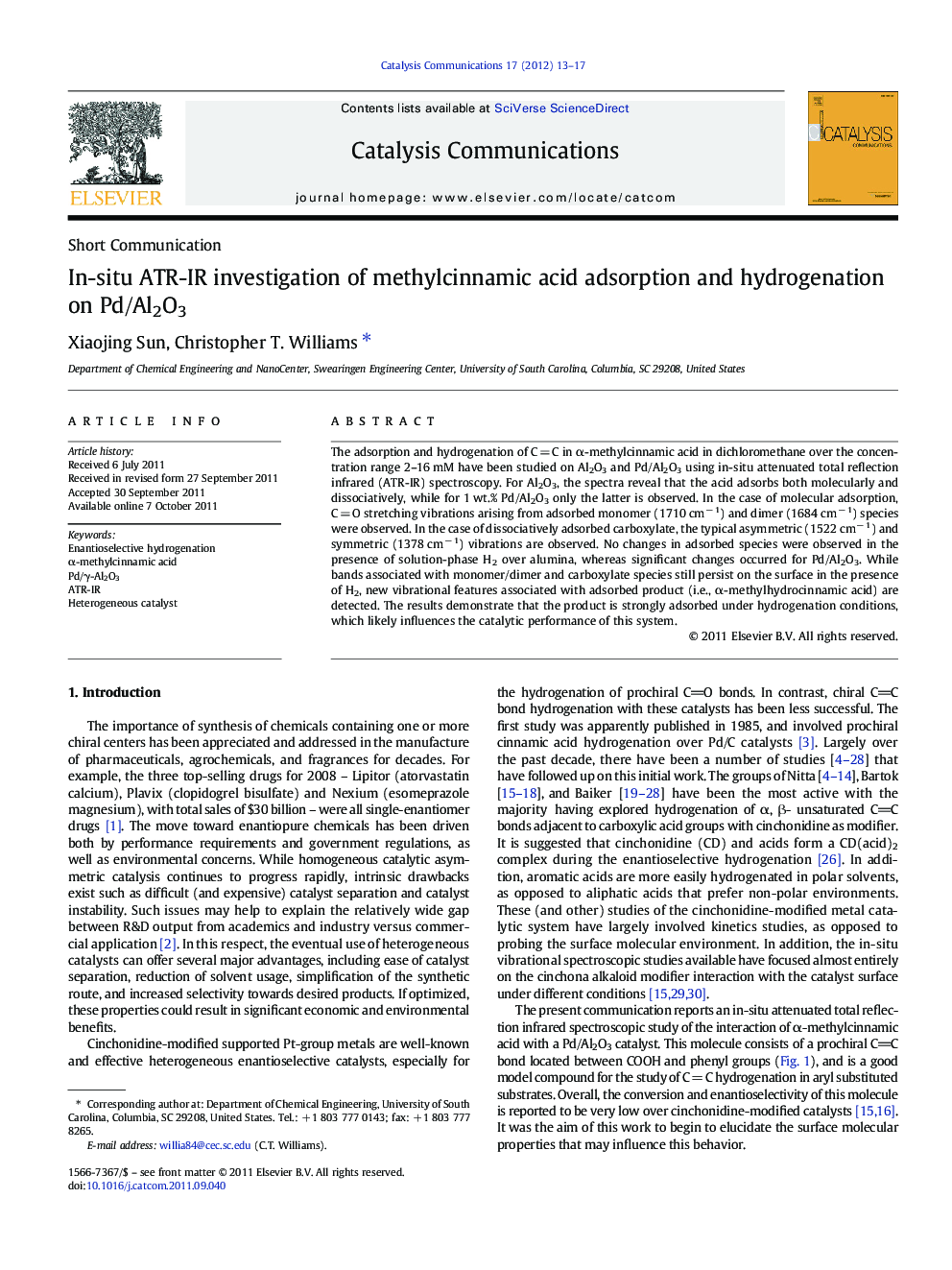| Article ID | Journal | Published Year | Pages | File Type |
|---|---|---|---|---|
| 50963 | Catalysis Communications | 2012 | 5 Pages |
The adsorption and hydrogenation of C = C in α-methylcinnamic acid in dichloromethane over the concentration range 2–16 mM have been studied on Al2O3 and Pd/Al2O3 using in-situ attenuated total reflection infrared (ATR-IR) spectroscopy. For Al2O3, the spectra reveal that the acid adsorbs both molecularly and dissociatively, while for 1 wt.% Pd/Al2O3 only the latter is observed. In the case of molecular adsorption, C = O stretching vibrations arising from adsorbed monomer (1710 cm− 1) and dimer (1684 cm− 1) species were observed. In the case of dissociatively adsorbed carboxylate, the typical asymmetric (1522 cm− 1) and symmetric (1378 cm− 1) vibrations are observed. No changes in adsorbed species were observed in the presence of solution-phase H2 over alumina, whereas significant changes occurred for Pd/Al2O3. While bands associated with monomer/dimer and carboxylate species still persist on the surface in the presence of H2, new vibrational features associated with adsorbed product (i.e., α-methylhydrocinnamic acid) are detected. The results demonstrate that the product is strongly adsorbed under hydrogenation conditions, which likely influences the catalytic performance of this system.
► Acid adsorbs molecularly and dissociatively on Al2O3, but only dissociatively on Pd. ► Adsorbed monomer/dimer acid species and bridging bidentate carboxylate are observed. ► Hydrogenation product is strongly adsorbed on catalyst surface.
